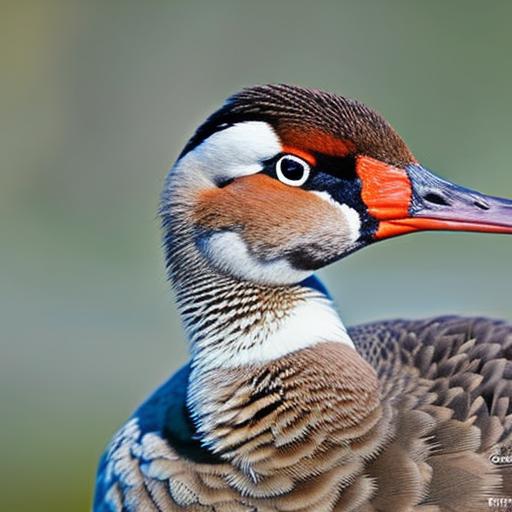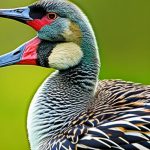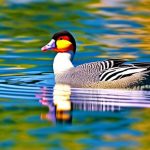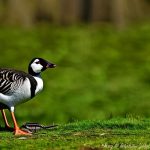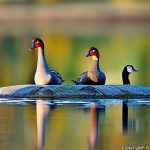Geese are large waterfowl that belong to the Anatidae family, which also includes ducks and swans. They are known for their distinctive honking sound and their V-shaped flying formation. Geese are found all over the world, from the Arctic to the tropics, and they are highly adaptable birds that can thrive in a variety of habitats. They are also known for their strong migratory instincts, with some species traveling thousands of miles each year. Geese are herbivorous birds, feeding on grasses, grains, and aquatic plants. They are also known for their strong family bonds and their highly social nature, often forming large flocks during migration and breeding seasons.
The History of Geese Breeding
The domestication of geese can be traced back to ancient times, with evidence of geese being kept for their meat, eggs, and feathers dating back to at least 3,000 years ago. Geese were particularly popular in ancient Egypt, where they were raised for their meat and feathers, and they were also used as guard animals to alert farmers to the presence of intruders. In medieval Europe, geese were a common sight on farms, where they were valued for their ability to forage for food and their high egg production. Over the centuries, geese breeding has become more specialized, with different breeds being developed for specific purposes, such as meat production, egg laying, or ornamental purposes.
The Different Breeds of Geese
There are over 50 different breeds of geese, each with its own unique characteristics and traits. Some of the most popular breeds include the Toulouse, Embden, and Chinese geese. The Toulouse goose is a large, heavy breed that is known for its excellent meat production, while the Embden goose is prized for its white feathers and high egg production. Chinese geese are smaller and more agile than other breeds, and they are often kept for their ornamental value. Other popular breeds include the African, Sebastopol, and Pilgrim geese, each with its own distinct appearance and qualities. Breeders have worked to develop geese that excel in specific traits, such as size, color, or temperament, resulting in a wide variety of breeds that cater to different needs and preferences.
Physical Characteristics of Geese
Geese are large birds, with most breeds weighing between 10 and 20 pounds. They have long necks, webbed feet, and broad, flat bills that are adapted for grazing on grasses and aquatic plants. Geese come in a wide range of colors and patterns, with some breeds having solid white, gray, or black feathers, while others have intricate patterns and markings. They also have a distinctive knob at the base of their bill, which is more prominent in some breeds than others. Geese are known for their strong, sturdy bodies and their graceful, waddling gait. They are also strong fliers, with some species capable of traveling thousands of miles during migration.
Geese Behavior and Social Structure
Geese are highly social birds that form strong bonds with their flock members. They are known for their loud honking calls, which they use to communicate with each other and to alert the flock to potential dangers. Geese are also highly territorial and will defend their nesting sites and feeding areas from intruders. During the breeding season, geese form monogamous pairs and work together to build nests and raise their young. They are also known for their strong family bonds, with parents and offspring often staying together in family groups. Geese are also highly intelligent birds, with excellent memories and problem-solving abilities. They are also known for their strong migratory instincts, with some species traveling thousands of miles each year.
Geese as Working Animals
Geese have been used as working animals for centuries, with their strong, sturdy bodies and high egg production making them valuable on farms. They are also used for weed control, as they are excellent grazers and can help keep grass and weeds in check. In some parts of the world, geese are also used as guard animals, as they are highly territorial and will alert their owners to the presence of intruders. Geese have also been used for their feathers, which are used to make pillows, quilts, and other bedding materials. In some cultures, geese are also used in religious ceremonies and rituals, and they are often seen as symbols of fertility, loyalty, and protection.
Geese in Art and Culture
Geese have long been a popular subject in art and literature, with their graceful, elegant appearance and strong social bonds making them a favorite among artists and writers. Geese are often depicted in paintings, sculptures, and other forms of art, and they are also a common motif in folklore and mythology. In some cultures, geese are seen as symbols of loyalty, courage, and wisdom, and they are often associated with gods and goddesses. Geese are also a popular subject in children’s stories and nursery rhymes, where they are often portrayed as wise and noble creatures. In some cultures, geese are also used in religious ceremonies and rituals, and they are often seen as symbols of fertility, loyalty, and protection.
Geese Conservation Efforts
Many species of geese are facing threats to their survival, including habitat loss, pollution, and hunting. Conservation efforts are underway to protect and preserve these birds, with measures such as habitat restoration, captive breeding programs, and hunting regulations being implemented to help ensure the survival of these birds. Organizations such as the International Union for Conservation of Nature (IUCN) and the Wildfowl & Wetlands Trust (WWT) are working to raise awareness about the plight of geese and to promote conservation efforts. These organizations are also working with local communities and governments to develop sustainable management plans for geese and their habitats.
Geese as Pets
Geese are also popular as pets, with their friendly, sociable nature and their high egg production making them a popular choice for small-scale farmers and homesteaders. They are also valued for their weed control abilities, as they can help keep grass and weeds in check. Geese are also known for their strong family bonds and their gentle, affectionate nature, making them a popular choice for families with children. However, geese do require a large amount of space and access to water, so they are not suitable for all households. It is important to research the specific needs and requirements of geese before bringing them into your home, and to ensure that you have the resources and knowledge to care for them properly.
Appreciating the Diversity of Geese Breeds
In conclusion, geese are fascinating and highly adaptable birds that have played an important role in human history for thousands of years. From their domestication in ancient Egypt to their use as working animals on farms, geese have been valued for their meat, eggs, feathers, and weed control abilities. They are also popular as pets and are a common subject in art and literature, where they are often portrayed as wise and noble creatures. With over 50 different breeds to choose from, each with its own unique characteristics and traits, there is a wide variety of geese to appreciate and admire. It is important to continue to support conservation efforts and to promote responsible ownership of geese, to ensure that these birds continue to thrive for generations to come.
Meet Walter, the feathered-friend fanatic of Florida! Nestled in the sunshine state, Walter struts through life with his feathered companions, clucking his way to happiness. With a coop that’s fancier than a five-star hotel, he’s the Don Juan of the chicken world. When he’s not teaching his hens to do the cha-cha, you’ll find him in a heated debate with his prized rooster, Sir Clucks-a-Lot. Walter’s poultry passion is no yolk; he’s the sunny-side-up guy you never knew you needed in your flock of friends!

